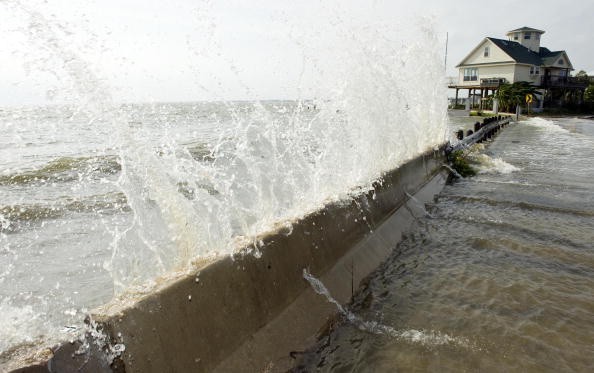The excessive rainfall from Hurricane Harvey in 2017 caused increasing ocean acidification in Texas' Galveston Bay, affecting the oyster reef and marine ecosystem.
The issue of ocean acidification is a pressing concern due to its impact on marine biodiversity and coral reefs.
The new study was published in the Communications Earth & Environment and The Conversation.
According to National Weather Service (NWS), Hurricane Harvey landed in Southeast Texas on August 25 to 29, 2017. The moisture-packed Hurricane unleashed a devastating impact on communities.
The report explained that Hurricane Harvey unloaded excessive rainfall and widespread flooding.
Increasing ocean acidification in Texas' Galveston Bay

The study explained that Galveston Bay has fresh water and salty seawater.
Meanwhile, the study noted that Galveston Bay is a well-known coastal estuary, noting that it is considered the largest bay and a producer of 9% of oysters in the country.
The report looked into the impact of excessive rainfall on Texas' Galveston Bay after Hurricane Harvey.
The widespread flooding and rainfall delivered fresh water into Galveston Bay, resulting in increasing acidity concerns.
According to National Oceanic and Atmospheric Administration (NOAA), ocean acidification has affected the world's oceans. Increasing acidification can be disastrous to sea organisms, oysters and corals.
Other than oysters, NOAA added that ocean acidification could affect non-calcifying organisms, including fish.
Meanwhile, the research found that Galveston bay became four times more acidic three weeks after the devastating storms.
The researchers emphasized the impact on the recovery of oysters reef after the Hurricane. According to the study, the acidification of waters can make it difficult for marine animals to thrive and survive.
Building the animals' shells would be difficult as seawater becomes more acidic than usual. As a result, increasing acidity can result in low production.
Drought in Texas
Furthermore, Texas has experienced moderate to extreme drought, according to US Drought Monitor.
Recently, CNN reported that Texas suffered from drought due to extreme heat and less rainfall. The reservoir's water supply also hit a record low
The challenging drought in Texas affected communities, water supplies and farming. CNN reported that cattle ranches are also impacted.
Farmers and livestock owners were worried about Texas's prolonged and widespread drought.
It is expected that the recent ice storm and rain will help with the drought conditions in Texas.
Did you know? The Storm of Galveston
In the history of worst storms in Texas, NPR explained that the Great Galveston Storm, on September 8, 1900, was devastating and deadly.
The report explained that the Category hurricane resulted in widespread damage. About 6,000 to 12,000 suffered in Galveston and parts of Texas.
Meanwhile, Britannica showed that Galveston was a popular Texas port. When the catastrophic Hurricane struck Texas, it unleashed strong winds and storm tides.
After the powerful Hurricane, the report explained that building elevation in the area increased by 3 meters (10 feet).
Related Article : How Gannets Thrive Dealing with Threats of Warming Sea Temperatures
For more weather news in the U.S., don't forget to follow Nature World News.
© 2025 NatureWorldNews.com All rights reserved. Do not reproduce without permission.





